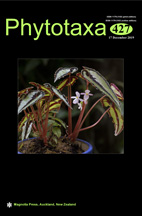Abstract
Recent exploration of the foothills of the Cordillera del Cóndor, southeastern Ecuador, led to the discovery of an unknown species of Sarcoglottis, and subsequent study in Peruvian herbaria permitted to record it in Peru. Here we describe it as Sarcoglottis neillii and provide a detailed drawing and color photographs taken from live plants. We compare its morphology with that of similar members of Sarcoglottis and conduct a preliminary assessment of its conservation status. Sarcoglottis neillii belongs to a small group of species including S. metallica, S. maroaënsis and S. stergiosii, differing from the former two species in leaf coloration and from the latter in flower size and labellum morphology. The single known Ecuadorian location of S. neillii was destroyed by extensive open pit-mining activities, but the several records from Peru suggest that the species is widespread; three locations occur within the Yanachaga-Chemillén National Park, but information on its actual range and potential threats is lacking and we suggest for it the category of Data Deficient (DD) until further field studies permit a better-informed assessment of its risk status.

